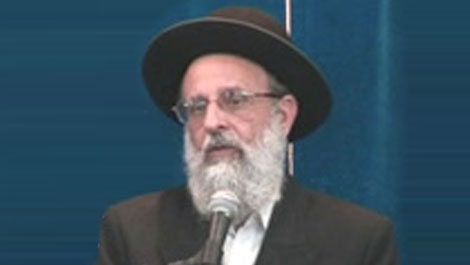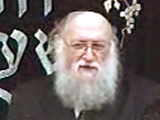Beit Midrash
- Torah Portion and Tanach
- Shmot
- Mishpatim
But the end of this Sedra (chap. 24) takes a decidedly different turn, telling an esoteric, obscure story about the ascent of Moshe, Ahron & the 70 Elders to Har Sinai, & their dramatic encounter there with the Almighty.
In advance of their ascent, Moshe performs an elaborate, mysterious ritual. He builds a Mizbeyach at the foot of the mount, with 12 pillars representing the 12 Tribes. He then sends "the youth of Israel" to bring peace-offerings to
G-d. Moshe takes the blood of these offerings, throwing half of it on the Mizbeyach & then - after the nation takes the oath, ‘"We shall do, & we shall obey!" - Moshe sprinkles the rest of the blood on the people as the "seal" of the
brit. Moshe, Ahron, Nada, Avihu & the elders then go up the mount, where they "see Hashem," under whose "feet" is a sapphire brick, as "pure as the purest Heaven."
What can we make of this strange scene, & how does it connect to our sedra & its many commandments?
Rashi cites a Medrash that the sapphire brick represents the bricks which the Hebrew slaves made in Egypt, & is a memorial to all the suffering they endured there. Their devotion to G-d shines like a precious gem, & Hashem
looks upon that brick whenever His people fall short in their fulfillment of Mitzvot, such as those in our parsha. Then, rather than give in to His impulse to punish the sinners, G-d is moved to Divine mercy & forgiveness.
G-d is particularly affected by the blood of the young people, whose deaths serve as atonement for the entire nation. In their merit, the Brit (as with Brit Mila, also sealed with blood) is eternally upheld by the Almighty, no matter how
far we may stray from that initial, "Na’aseh V’Nishma."
This week, we mourn the brutal murder of a young Tzadik, Rav Itamar Ben-Gal, stabbed to death by yet another Palestinian terrorist – may they be driven out of our Land forever by our military & "Aish Ochelet," the consuming fire of Hashem. And may the blood of these Kedoshim atone for us, their "peace-offering" before Hashem bringing true & lasting Shalom to Am Yisrael.























